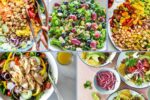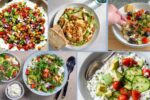Couscous—a light, fluffy, and versatile grain—has won hearts around the world with its subtle flavor and adaptability. From vibrant North African markets to chic European restaurants, couscous plays a starring role on countless menus. But have you ever wondered: Which country eats the most couscous in the world?
The answer: Morocco.
Morocco doesn’t just consume the most couscous—it reveres it. In Moroccan homes, couscous is not just food; it’s tradition, celebration, and comfort rolled into one delicious dish. In this article, we’ll explore the history, cultural significance, variations, and vegetarian uses of couscous, while examining how its global popularity continues to grow.
Morocco: The World’s Couscous Capital
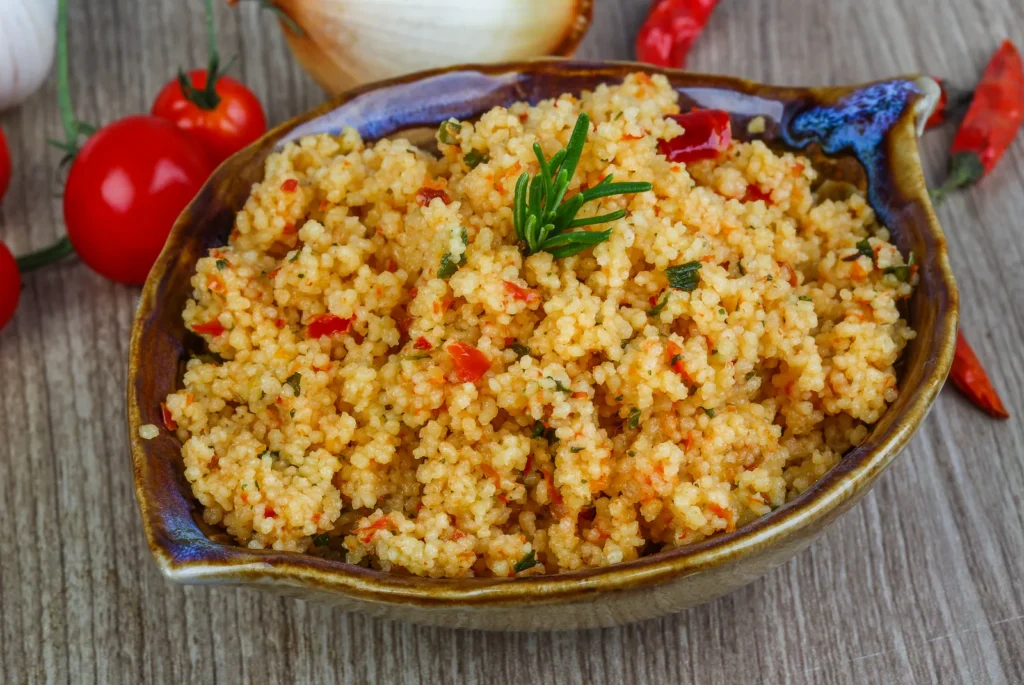
Couscous is so intertwined with Moroccan identity that Friday is often called “Couscous Day.” It’s a weekly ritual, where families gather after midday prayers to enjoy steaming platters of couscous topped with vegetables, chickpeas, and fragrant spices.
Why Morocco Eats the Most Couscous:
- Cultural Significance: Couscous is considered a national dish. It’s central to weddings, religious events, and family gatherings.
- Accessibility: Couscous is easy to prepare, affordable, and shelf-stable, making it a kitchen staple.
- Diverse Recipes: Morocco offers endless vegetarian couscous dishes using seasonal vegetables, legumes, and traditional spice blends.
- Home and Restaurant Favorite: Whether at a street stall or a fine-dining establishment, couscous is everywhere in Morocco.
What Exactly Is Couscous?
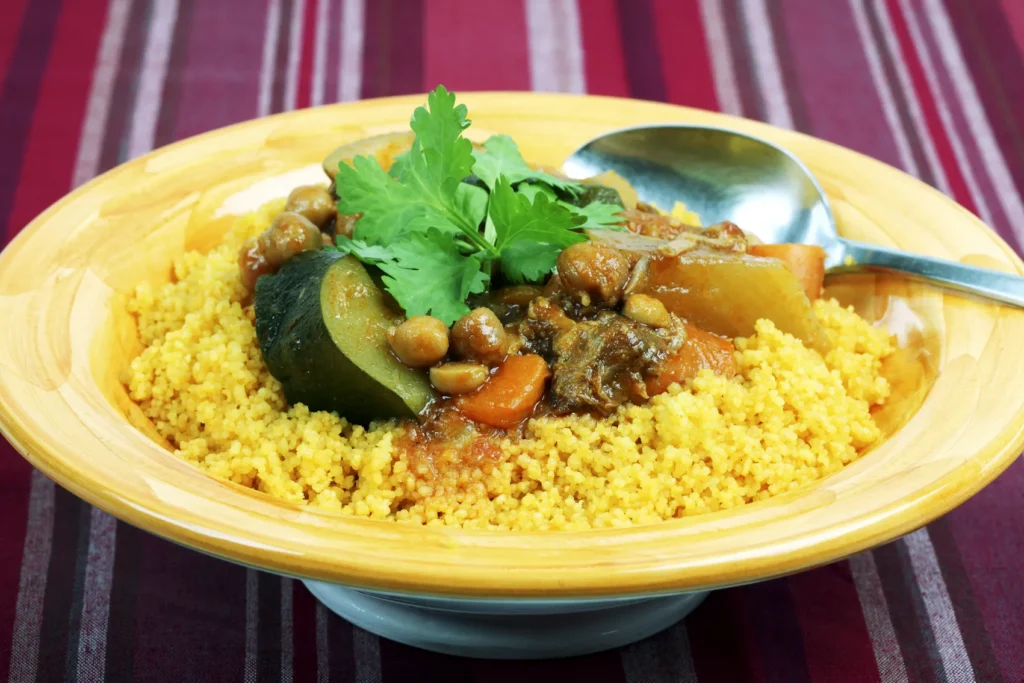
Many assume couscous is a grain, but it’s actually a type of pasta made from crushed durum wheat semolina. Traditionally hand-rolled and steamed, couscous is now often machine-produced and sold dried for quick cooking.
Types of Couscous:
- Moroccan Couscous: Small and quick-cooking, perfect for light salads and side dishes.
- Israeli (Pearl) Couscous: Larger, rounder pearls that hold sauces well.
- Lebanese Couscous (Moghrabieh): Largest variety, often used in stews.
All are vegetarian-friendly and extremely adaptable in global cuisines.
Traditional Moroccan Vegetarian Couscous

While couscous is often paired with meat in some cultures, Moroccan vegetarian couscous is deeply traditional and widely consumed. A classic version includes:
- Carrots
- Zucchini
- Pumpkin
- Turnips
- Cabbage
- Chickpeas
- Onions
- Tomatoes
- Olive oil and Moroccan spices (cumin, paprika, turmeric, cinnamon)
All ingredients are slowly cooked to create a savory broth, which is then ladled over fluffy couscous grains. A dash of harissa (a spicy chili paste) or sweet caramelized onions with raisins can also be added for extra depth.
Other Countries That Love Couscous
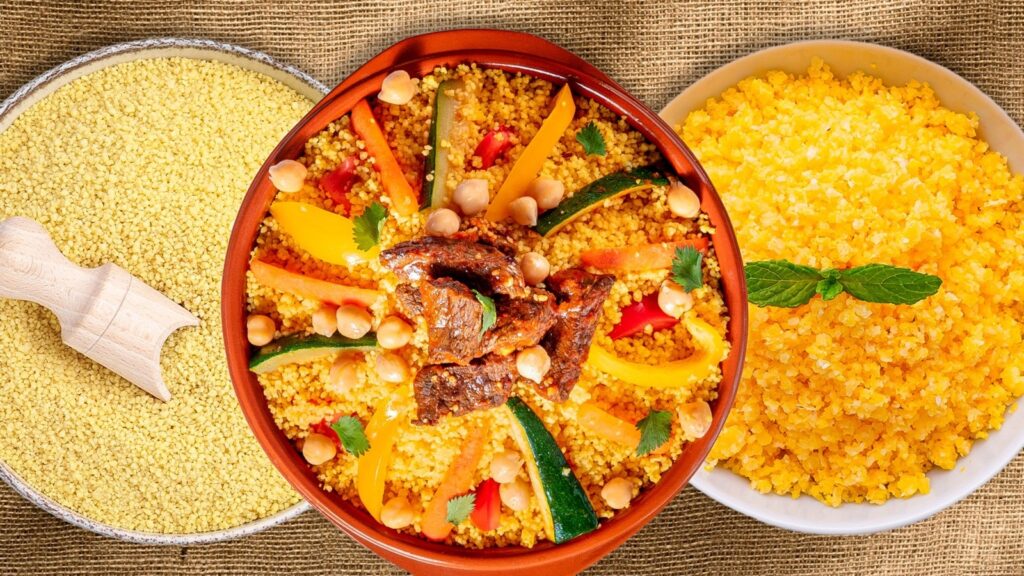
While Morocco leads in consumption and tradition, several other countries are catching up.
Algeria
Couscous is nearly as significant in Algeria as it is in Morocco. It’s consumed weekly and is a cultural mainstay. Vegetarian couscous with carrots, potatoes, squash, and chickpeas is very popular, especially during religious festivals.
Tunisia
Tunisian couscous has a spicy reputation thanks to its liberal use of harissa. Vegetarian versions include artichokes, chickpeas, potatoes, and olives, often cooked in tomato-based broth.
France
Due to its colonial history and large North African diaspora, France is one of the world’s largest importers and consumers of couscous outside North Africa. Couscous is regularly enjoyed in homes, school cafeterias, and gourmet bistros alike. French-style vegetarian couscous includes grilled vegetables and aromatic broths, sometimes served cold as a salad (tabbouleh-style).
Italy
Known as “cuscus” in Sicily, Italian couscous traditions mix Mediterranean vegetables like eggplants, bell peppers, and sun-dried tomatoes with olive oil and herbs. The island of Sardinia is particularly fond of couscous due to its proximity to North Africa.
Couscous in Vegetarian Cuisine
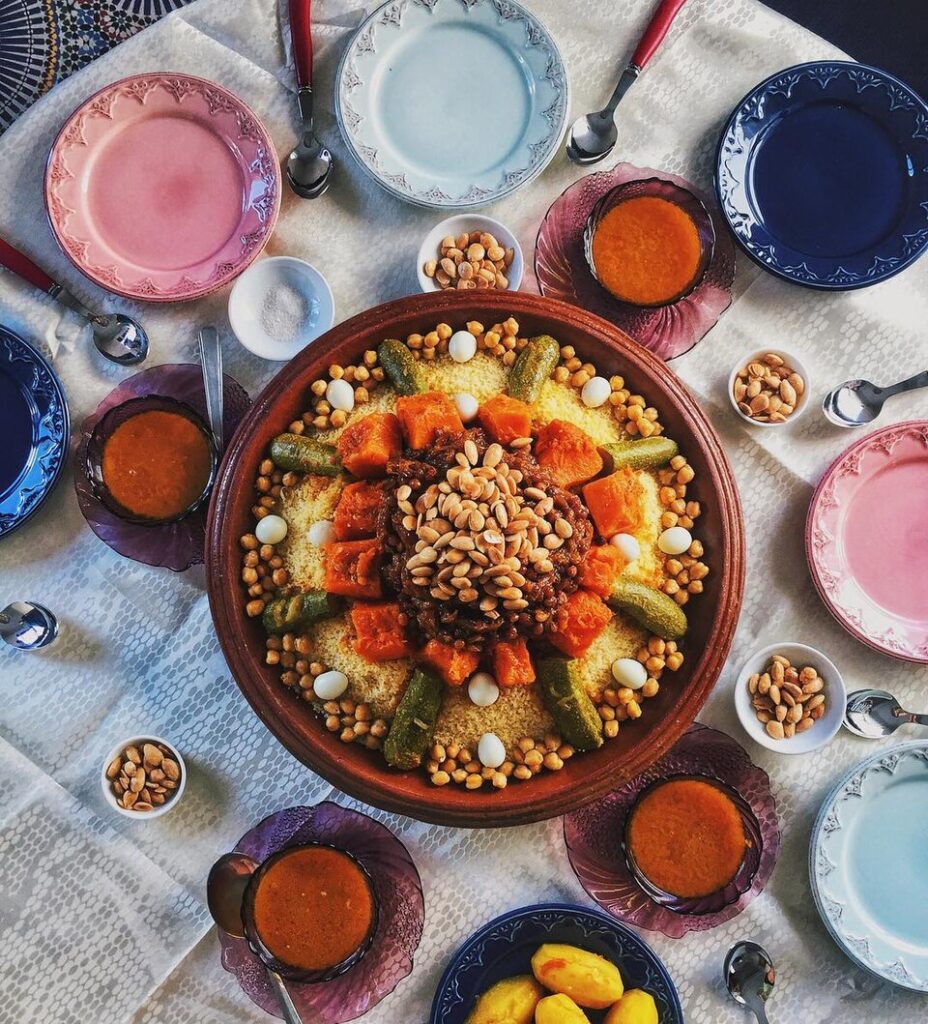
Couscous shines in vegetarian cooking thanks to its texture and ability to soak up flavors. Here are some globally inspired vegetarian couscous dishes:
1. Couscous with Roasted Vegetables
A mix of bell peppers, zucchini, cherry tomatoes, and red onions roasted and served over fluffy couscous, drizzled with tahini or balsamic glaze.
2. Herbed Couscous Salad
A cold salad made with chopped parsley, mint, cucumbers, lemon juice, and olive oil. Sometimes includes feta cheese or chickpeas for added protein.
3. Stuffed Bell Peppers with Couscous
Couscous mixed with tomatoes, olives, herbs, and pine nuts, then baked inside sweet bell peppers.
4. Spiced Couscous with Chickpeas
A warm bowl of couscous seasoned with cumin, cinnamon, turmeric, and tossed with sautéed chickpeas and carrots.
History of Couscous
Couscous dates back to the 13th century, likely originating in the Maghreb (Northwest Africa). It was traditionally prepared by hand, with women gathering in circles to roll semolina grains by hand and steam them over vegetable stew.
The dish eventually spread via trade, migration, and colonization to Europe and the Middle East. Today, it’s found in fusion cuisines across the globe.
Nutritional Benefits of Couscous
Couscous is more than a tasty base—it also packs nutritional perks:
- Low in fat and cholesterol-free
- High in selenium (supports immunity and heart health)
- Contains plant-based protein (especially when paired with legumes)
- Good source of fiber (whole wheat varieties)
To boost its nutrition, pair couscous with lentils, chickpeas, or leafy greens, and choose whole wheat couscous when possible.
How to Make Classic Moroccan Vegetarian Couscous (Recipe)
Ingredients:
- 1½ cups couscous
- 1 tbsp olive oil
- 1 onion, diced
- 2 carrots, chopped
- 1 zucchini, chopped
- ½ small cabbage, chopped
- 1 turnip, diced
- 1 cup cooked chickpeas
- 2 tomatoes, grated
- 1 tsp turmeric
- 1 tsp ground cumin
- Salt and pepper to taste
- 4 cups vegetable broth or water
Instructions:
- In a large pot, heat olive oil and sauté onions until translucent.
- Add carrots, zucchini, cabbage, and turnip. Cook for 5 minutes.
- Stir in grated tomatoes, spices, chickpeas, and broth.
- Simmer covered for 25–30 minutes until vegetables are tender.
- Meanwhile, prepare couscous according to package instructions.
- Fluff couscous with a fork and serve with the vegetable stew spooned over the top.
- Garnish with fresh parsley or caramelized onions and raisins for an authentic Moroccan touch.
Global Trends: The Rise of Couscous
Couscous is becoming a global favorite thanks to its quick preparation, versatility, and compatibility with vegetarian and vegan diets.
- Plant-based diet trends are driving couscous sales worldwide.
- Couscous is now found in ready-meal kits, restaurant menus, and health-focused meal plans.
- Major food brands are releasing whole grain and flavored couscous options, including Mediterranean, spicy harissa, and lemon herb.
Fun Facts About Couscous
- In 2020, UNESCO recognized couscous as an Intangible Cultural Heritage of Humanity, celebrating its place in North African culture.
- The word “couscous” comes from the Berber word “seksu,” meaning “well rolled” or “well formed.”
- Couscous is traditionally eaten by hand in communal dishes in many North African cultures.
Conclusion: Morocco Reigns Supreme
So, which country eats the most couscous in the world? The honor goes to Morocco—a land where couscous isn’t just food, but tradition, identity, and art.
With its growing international appeal and its ideal match for vegetarian cuisine, couscous has truly become a global favorite. Whether it’s a humble bowl of herbed couscous salad or a festive Friday couscous feast, this humble semolina pasta continues to nourish, comfort, and bring people together.
So next time you reach for a pot of couscous, think of Morocco—and consider adding your own vegetarian twist to a timeless tradition.

